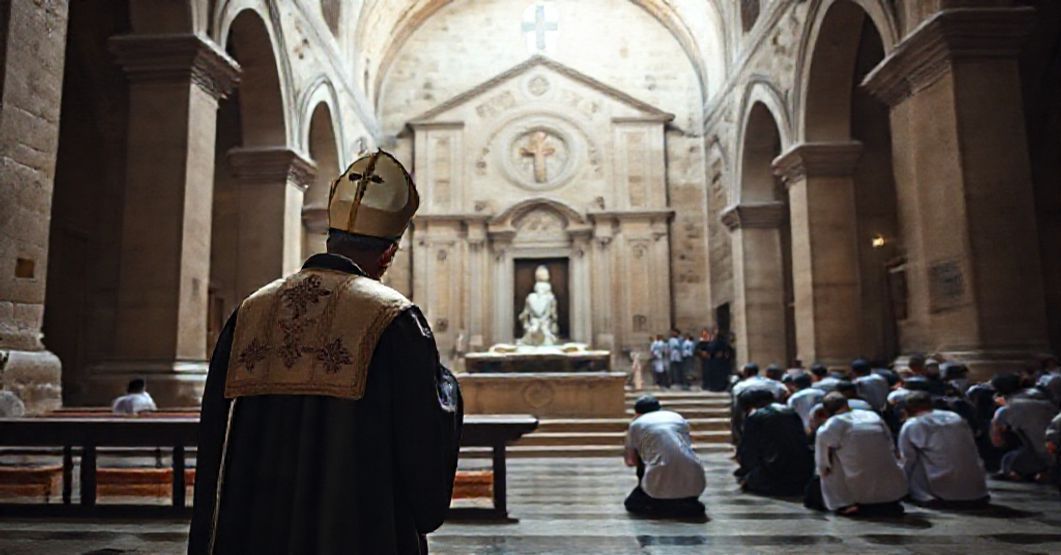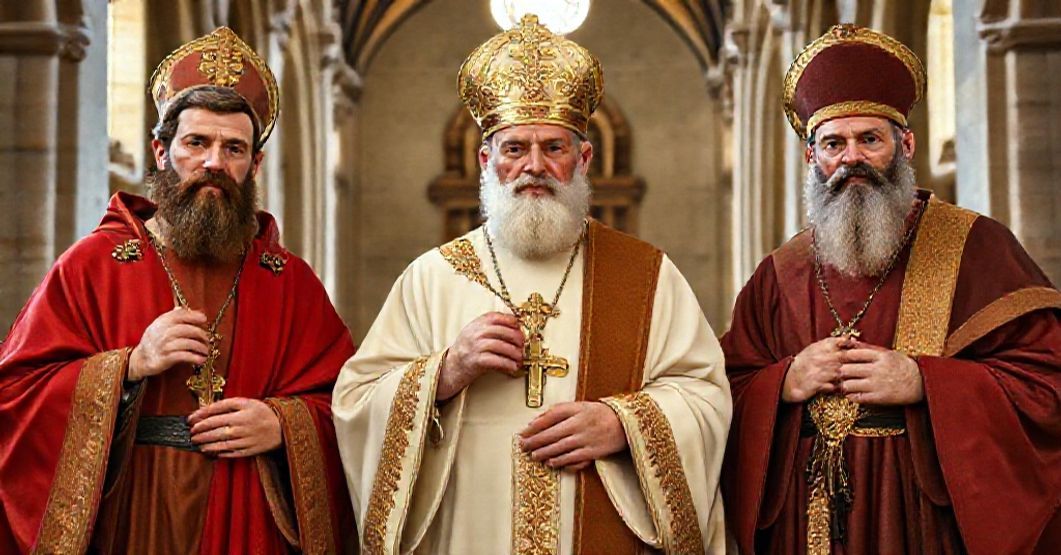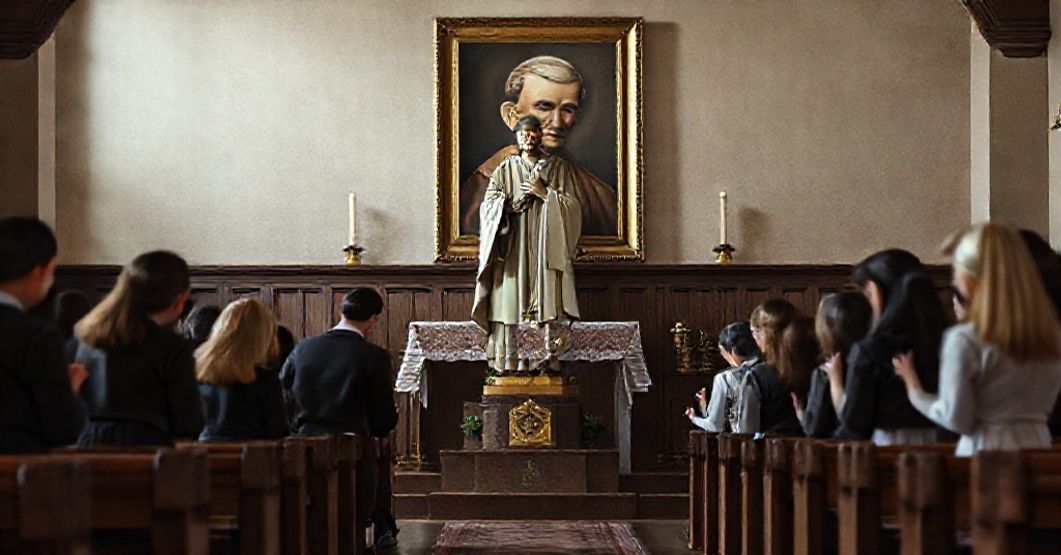Antipopes of the Antichurch



















Timeline of this heretical pontiff
Encyclical Letters
+ 15 posts1959
+ 7 posts1961
+ 4 posts1962
+ 2 posts1963
+ 2 postsApostolic Exhortations
+ 3 postsApostolic Constitutions
+ 93 posts1958
+ 6 posts1959
+ 87 postsMotu Proprio
+ 15 posts1958
+ 1 posts1959
+ 1 posts1962
+ 11 postsApostolic Letters
+ 151 posts1958
+ 4 posts1959
+ 63 posts1960
+ 78 posts1961
+ 1 posts1962
+ 4 posts1963
+ 1 postsSpeeches
+ 99 posts1958
+ 2 posts1959
+ 26 posts1960
+ 29 posts1961
+ 16 posts1962
+ 24 postsMessages
+ 6 posts1959
+ 4 postsHomilies
+ 4 postsLetters
+ 152 posts1958
+ 1 posts1959
+ 48 posts1960
+ 32 posts1961
+ 31 posts1962
+ 30 posts1963
+ 10 postsNot categorized
+ 1 posts1958
+ 1 postsNews feed


Monumentum pietatis (1960.04.29)
The document attributed to John XXIII, under the title “Monumentum pietatis,” is a brief act granting the Cathedral of Trani the title and juridical status of a minor basilica. It extols the historical, artistic, and devotional significance of the temple—particularly its architecture and the cult of Saint Nicholas the Pilgrim—and then, invoking “Apostolic” authority, formally elevates the cathedral, attaching to it the rights and privileges traditionally belonging to minor basilicas.


Beati Caelites (1960.04.28)
Beati Caelites is a brief Latin act of John XXIII by which he “confirms or again constitutes and declares” Saint Lawrence the Martyr and Saint Adalbert, Bishop and Martyr, as principal patrons, and Saint George, Martyr, as secondary patron of the diocese of Culm (Chełmno), while declaring Saint Bernard, Abbot, as principal patron of Pelplin, the episcopal city of the same diocese, attaching to these choices the liturgical honors and privileges proper to principal and secondary patrons.


Peculiare studium (1960.04.22)
The document “Peculiare studium” (22 April 1960), issued by John XXIII as an apostolic letter, proclaims John Bosco “heavenly patron” of all Spanish “young apprentices” (Jóvenes Aprendices Españoles). Under a pious pretext—concern for working youth amid moral dangers—it clothes a socio-pedagogical program with religious language, proposes Don Bosco as emblematic model, and juridically extends his patronage with liturgical privileges to a mass category defined primarily by labor status rather than supernatural criteria. In reality, this brief text exemplifies the shift from the reign of Christ and the integral mission of the Church to a sentimental, horizontal, anthropocentric cult of “youth,” preparing the ideological terrain of the conciliar revolution.


Studio inflammatus (1960.04.07)
This short Latin document from John XXIII proclaims St. Vincent de Paul as the principal heavenly patron of the Diocese of Arcs of the Dolphin (Arcis Delphini) in Madagascar, rehearsing in devotional terms Vincent’s zeal for propagating the Kingdom of God, invoking his role in evangelization, and, by alleged “apostolic authority,” extending to that diocese the liturgical rights and privileges proper to a principal patron, with the usual canonical clauses of validity and nullity. It is precisely in this apparently pious and harmless act that the juridical and ecclesiological imposture of the conciliar usurpers reveals itself most clearly: a counterfeit “apostolic” authority, severed from the integral faith, presumes to legislate in the name of Christ and the saints while objectively waging war against the very doctrinal order that made those saints possible.
Varia
Announcement:
– News feed –implemented
– Antipopes separate web sites with their all documents refutation – in progress
